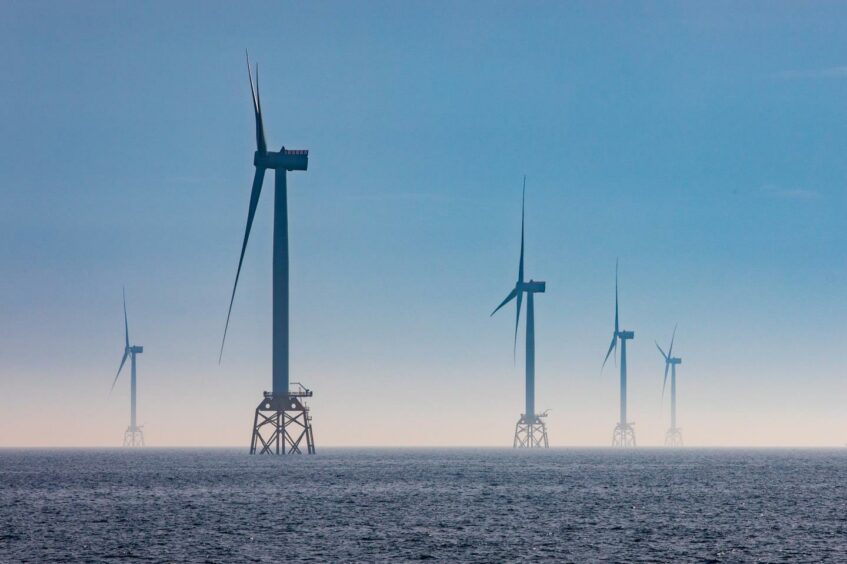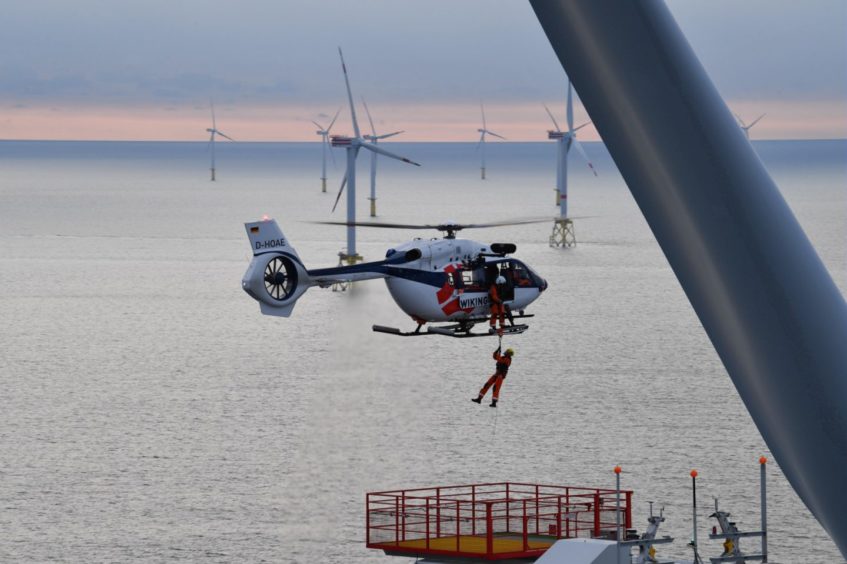
Another offshore wind leasing round in Scottish waters is in the pipeline, organisers of the process have confirmed.
During Energy Voice’s ETIDEX event on Thursday, Colin Maciver, head of offshore wind development at Crown Estate Scotland, said ScotWind two is “certainly on the horizon”.
Results for the inaugural ScotWind process, the first leasing round in Scottish waters in a decade, are expected early next year.
The scheme, which closed to bids in July, allows developers to secure acreage offshore that can be used to house wind turbines.
Many companies and consortiums are going to be left disappointed though, after 74 bids were submitted for just 15 seabed leases.
Scotland’s cabinet secretary for energy and net zero, Michael Matheson confirmed in September that planning is already underway for another leasing process.
On whether the huge demand for offshore acreage could speed up the delivery of the next round, Mr Maciver said: “Our role as seabed manager is often quite reactive. When it comes to managing project agreements we can be reactive and response to what the scheme wants to do and the way the team want it delivered.
“I think that’s also true with leasing. ScotWind one, as it’s now called, had some clear objectives and was designed to deliver them. Those were linked to the Offshore Wind Sector Deal ambition and availability of seabeds in order to see them through.
“ScotWind two projects are more likely to deliver beyond 2030 so it’d be sensible to make sure we’ve got an appropriate process to give seabed exclusivity and rights to schemes looking to deliver the next phase of wind farms.”
The race for space
In order to increase their chances of bagging acreage, many companies have made subsequent announcements to bulk up their bids.
A consortium comprised of Ocean Winds and Aker Offshore Wind unveiled plans yesterday for the largest industrial innovation in Scotland since the dawn of the oil and gas sector should they be successful.
Meanwhile, BP (LON: BP) has pledged to make Aberdeen the centre of its global offshore wind business as part of a £10billion spending spree.
Anya Hoff, vice president offshore wind growth at the oil and gas giant, told ETIDEX that BP is going through a transition in step with industry.
She said: “In the last couple of years, since we starting building the offshore wind business within BP, I’ve seen huge excitement building up because we’re seeing change within the company right now.
“We’ve got engineers, consenting specialists, operational experts and analysts that can deploy their skills in renewables, and offshore wind specifically.
“That’s very valuable because the just transition is happening right now in BP, as it is happening in the UK. This demonstrates our commitment to net zero.”
Transmission Charging
Despite the industry drive to get offshore wind turbines in the sea, barriers to rapid deployment remain.
Grid connection charges have previously been pinpointed as a major barrier to the roll out of offshore wind in Scotland.
Under the current system, wind farms that are located further away from major urban areas have to pay a fee to feed their electricity into the grid.
That makes it harder for more remote projects to be financially viable, even though their located in areas with better wind resources.
Guy Nicholson, head of grid integration at Norwegian energy giant Statkraft, said: “It’s always been a bit of an issue, now it really does need addressing.
“The charging regime really is based on the assumption that we’re upgrading the onshore infrastructure, and we’re not. We’re doing it with subsea interconnectors or HVDC links.
“In terms of developing an onshore of offshore wind farm, we used to worry about wind or capex, now we worry about gird charges. It’s the biggest variable.”
Industry needs to be ‘nimble’
Rounding of the session, moderator Claire Mack, chief executive of trade body Scottish Renewables, said: “We’ve got to be nimble in terms of thinking about new licensing regimes, how we deploy new technologies and about how we work with people.
“But let’s not forget what the prizes are, we’ve got the potential, particularly in the offshore space, and we’ve seen what the prizes are, in terms of multi-million pounds worth of investment.
“That’s something we’ve got to look forward to in Scotland, a country that can definitely punch well above its weight.”
Recommended for you


 © SYSTEM
© SYSTEM © Supplied by bp
© Supplied by bp © Mick McGurk
© Mick McGurk